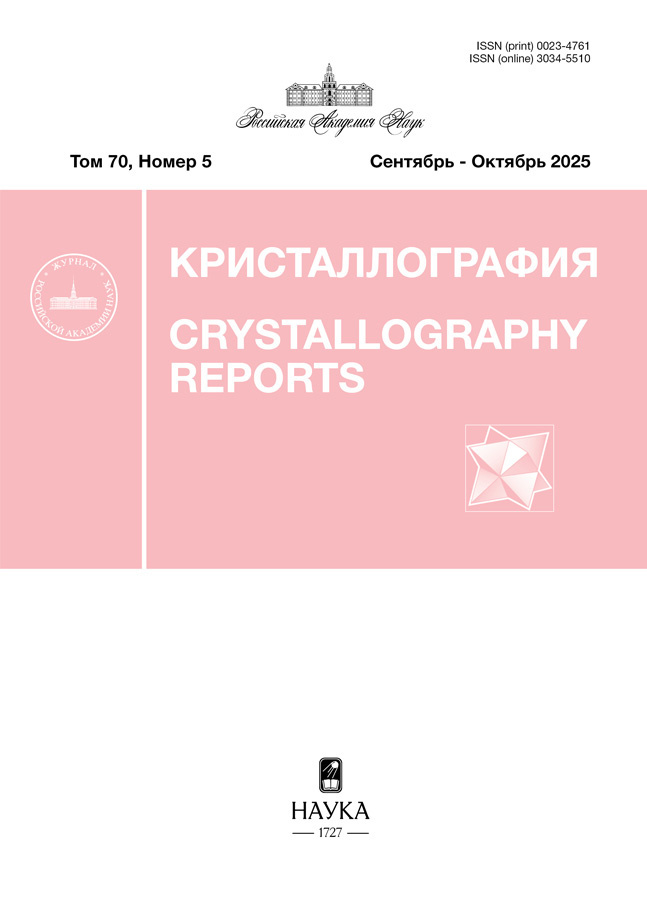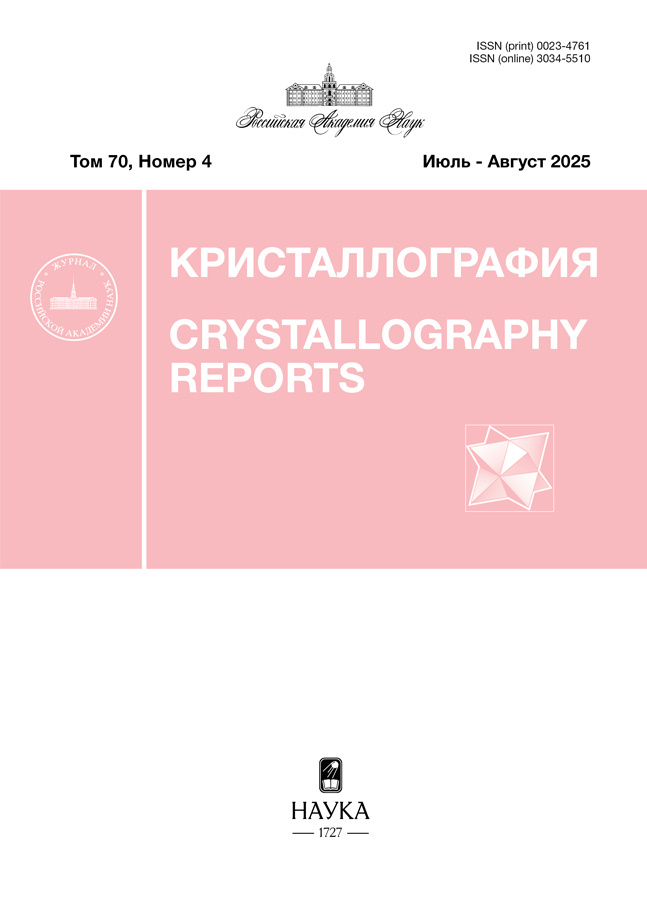Surface acoustic waves in layer – substrate structures of arbitrary anisotropy
- Authors: Darinskii A.N.1, Kosevich Y.A.2,3
-
Affiliations:
- National Research Center “Kurchatov Institute”
- Semenov Federal Research Center for Chemical Physics of the Russian Academy of Sciences
- Plekhanov Russian University of Economics
- Issue: Vol 70, No 4 (2025)
- Pages: 626–636
- Section: ФИЗИЧЕСКИЕ СВОЙСТВА КРИСТАЛЛОВ
- URL: https://cardiosomatics.orscience.ru/0023-4761/article/view/688086
- DOI: https://doi.org/10.31857/S0023476125040114
- EDN: https://elibrary.ru/JGILGG
- ID: 688086
Cite item
Abstract
The existence of surface acoustic waves in a semi-infinite substrate with a solid layer is theoretically investigated. The substrate and the layer are not piezoelectrics, but can belong to any class of crystallographic symmetry. By presenting the dispersion equation as a condition on the substrate and layer impedance matrices, it is possible to determine, using the properties of impedances, the maximum allowable number of surface waves depending on the type of contact and the ratio between the velocities of the bulk waves in the substrate and the layer materials. In addition, a dispersion equation is derived for the symmetrical orientation of an orthorhombic substrate with a deposited monoatomic layer and the possibility of a purely flexure surface acoustic wave in the case of a very hard surface layer, for example, a monolayer of graphene on a soft polymer substrate, is shown.
Full Text
About the authors
A. N. Darinskii
National Research Center “Kurchatov Institute”
Author for correspondence.
Email: Alexandre_Dar@mail.ru
Shubnikov Institute of Crystallography of the Kurchatov Complex Crystallography and Photonics
Russian Federation, MoscowYu. A. Kosevich
Semenov Federal Research Center for Chemical Physics of the Russian Academy of Sciences; Plekhanov Russian University of Economics
Email: yukosevich@gmail.com
Russian Federation, Moscow; Moscow
References
- Бреховских Л.М., Годин О.А. Акустика слоистых сред. М.: Наука, 1989. 411 с.
- Novoselov K.S., Jiang D., Schedin F., Geim A.K. // Proc. Natl. Acad. Sci. USA. 2005. V. 102. P. 10451. https://doi.org/10.1073/pnas.0502848102
- Geim A.K., Novoselov K.S. // Nat. Mater. 2007. V. 6. P. 183. https://doi.org/10.1038/nmat1849
- Buravets V., Hosek F., Burtsev V. et al. // Inorg. Chem. 2024. V. 63. P. 8215. https://doi.org/10.1021/acs.inorgchem.4c00475
- Booth T.J., Blake P., Nair R. et al. // Nano Lett. 2008. V. 8. P. 2442. https://doi.org/10.1021/nl801412y
- Ye Ch., Peng Q. // Crystals. 2023. V. 13. P. 12. https://doi.org/10.3390/cryst13010012
- https://en.wikipedia.org/wiki/Transition_metal_dichalcogenide_monolayers
- Lee C., Wei X., Kysar J.W., Hone J. // Science. 2008. V. 321. P. 385. https://doi.org/10.1126/science.1157996
- Akinwande D., Brennan Ch., Bunch J. et al. // Extreme Mech. Lett. 2017. V. 13. P. 42. https://doi.org/10.1016/j.eml.2017.01.008
- Roldán R., Chirolli L., Prada E. et al. // Chem. Soc. Rev. 2017. V. 46. P. 4387. https://doi.org/10.1039/C7CS00210F
- Андреев А.Ф., Косевич Ю.А. // ЖЭТФ. 1981. Т. 81. С. 1435. http://jetp.ras.ru/cgi-bin/dn/e_054_04_0761.pdf
- Косевич Ю.А., Сыркин Е.С. // ЖЭТФ. 1985. Т. 89. С. 2221. http://www.jetp.ras.ru/cgi-bin/dn/e_062_06_1282.pdf
- Kosevich Yu.A., Syrkin E.S. // Phys. Lett. A. 1987. V. 122. P. 178. https://doi.org/10.1016/0375-9601(87)90801-2
- Косевич Ю.А., Сыркин Е.С. // Кристаллография. 1988. Т. 33. С. 1339.
- Kosevich Yu.A., Syrkin E.S. // Phys. Lett. A. 1989. V. 135. P. 298. https://doi.org/10.1016/0375-9601(89)90118-7
- Kosevich Yu.A., Syrkin E.S. // Low Temp. Phys. 1994. V. 20. P. 517. https://doi.org/10.1063/10.0033673
- Kosevich Yu.A. // Prog. Surf. Sci. 1997. V. 55. P. 1. https://doi.org/10.1016/S0079-6816(97)00018-X
- Kosevich Yu.A., Kistanov A.A., Strelnikov I.A. // Lett. Mater. 2018. V. 8. P. 278. https://doi.org/10.22226/2410-3535-2018-3-278-281
- Kosevich Yu.A. // Phys. Rev. B. 2022. V. 105. P. L121408. https://doi.org/10.1103/PhysRevB.105.L121408
- Лехницкий С.Г. Анизотропные пластинки. М.: Наука, 1957. 463 с.
- Ландау Л.Д., Лифшиц Е.М., Косевич А.М., Питаевский Л.П. Теоретическая физика. Теория упругости. 4-е изд., испр. М.: Наука, 1987. 248 с.
- Androulidakis Ch., Koukaras E., Frank O. et al. // Sci. Rep. 2014. V. 4. P. 5271. https://doi.org/10.1038/srep05271
- Ingebrigtsen K.A., Tonning A. // Phys. Rev. 1969. V. 184. P. 942. https://doi.org/10.1103/PhysRev.184.942
- Lothe J., Barnett D.M. // J. Appl. Phys. 1976. V. 47. P. 428. https://doi.org/10.1063/1.322665
- Lothe J., Barnett D.M. // J. Appl. Phys. 1976. V. 47. P. 1799. https://doi.org/10.1063/1.322895
- Lothe J., Barnett D.M. // Phys. Norvegica. 1977. V. 8. P. 239.
- Lothe J., Barnett D.M. // Proc. R. Soc. Lond. A. 1985. V. 402. P. 135. https://doi.org/10.1098/rspa.1985.0111
- Barnett D.M., Lothe J., Gavazza S.D., Musgrave M.J.P. // Proc. R. Soc. Lond. A. 1985. V. 402. № 1822. https://doi.org/10.1098/rspa.1985.0112
- Peach R.C. // IEEE Trans. Ultrason. Ferroelectr. Freq. Control. 2001. V. 48. P. 1308. https://doi.org/10.1109/58.949740
- Barnett D.M., Gavazza S.D., Lothe J. // Proc. R. Soc. London. A. 1988. V. 415. P. 389. https://doi.org/10.1098/rspa.1988.0020
- Abbudi M., Barnett D.M. // Proc. R. Soc. London. A. 1990. V. 429. P. 587. https://doi.org/10.1098/rspa.1990.0075
- Alshits V.I., Darinskii A.N., Lothe J. // Wave Motion. 1992. V. 16. P. 265. https://doi.org/10.1016/0165-2125(92)90033-X
- Alshits V.I., Barnett D.M., Darinskii A.N., Lothe J. // Wave Motion. 1994. V. 20. P. 233. https://doi.org/10.1016/0165-2125(94)90049-3
- Darinskii A.N., Shuvalov A.L. // Phys. Rev. B. 2018. V. 98. P. 024309. https://doi.org/10.1103/PhysRevB.98.024309
- Darinskii A.N., Shuvalov A.L. // Phys. Rev. B. 2019. V. 99. P. 174305. https://doi.org/10.1103/PhysRevB.99.174305
- Darinskii A.N., Shuvalov A.L. // Phys. Rev. B. 2019. V. 100. P. 184303. https://doi.org/10.1103/PhysRevB.100.184303
- Darinskii A.N., Shuvalov A.L. // Proc. R. Soc. A. 2019. V. 475. P. 20190371. https://doi.org/10.1098/rspa.2019.0371
- Darinskii A.N., Shuvalov A.L. // Ultrasonics. 2021. V. 109. P. 106237. https://doi.org/10.1016/j.ultras.2020.106237
- Бирюков С.В., Гуляев Ю.В., Крылов В.В., Плесский В.П. Поверхностные акустические волны в неоднородных средах. М.: Наука, 1991. 414 с.
- Stroh A.N. // Philos. Mag. 1958. V. 41. P. 625. https://doi.org/10.1080/14786435808565804
- Anderson P.M., Hirth J.P., Lothe J. Theory of Dislocations. 3rd ed. Cambridge: Cambridge University Press, 2017. 699 p.
- Elastic strain fields and dislocation mobility / Eds. Indenbom V.L., Lothe J. Amsterdam: North-Holland, 1992. 778 p.
- Ting T.C.T. Anisotropic Elasticity: Theory and Applications. New York: Oxford University Press, 1996. 592 р.
- Chadwick P., Smith G.D. // Adv. Appl. Mech. 1977. V. 17. P. 303. https://doi.org/10.1016/S0065-2156(08)70223-0
- Tanuma K. // J. Elasticity. 2007. V. 89. P. 5. https://doi.org/10.1007/s10659-007-9117-1
- Shuvalov A.L. // Proc. R. Soc. London. A. 2000. V. 456. P. 2197. https://doi.org/10.1098/rspa.2000.0609
- Hwu Ch. Anisotropic Elastic Plates. New York: Springer, 2010. 673 p.
- Rokhlin S.I., Chimenti D.E., Nagy P.B. Physical Ultrasonics of Composites. Oxford: Oxford University Press, Inc. 2011. 378 p.
- Альшиц В.И., Любимов В.Н., Шувалов А.Л. // ЖЭТФ. 1994. Т. 106. С. 828.
- Shuvalov A.L., Every A.G. // Wave Motion. 2002. V. 36. P. 257. https://doi.org/10.1016/S0165-2125(02)00013-6
- Shuvalov A.L., Every A.G. // Ultrasonics. 2002. V. 40. P. 939. https://doi.org/10.1016/S0041-624X(02)00235-4
- Politano A., Chiarello G. // Nano Res. 2015. V. 8. P. 1847. https://doi.org/10.1007/s12274-014-0691-9
Supplementary files













